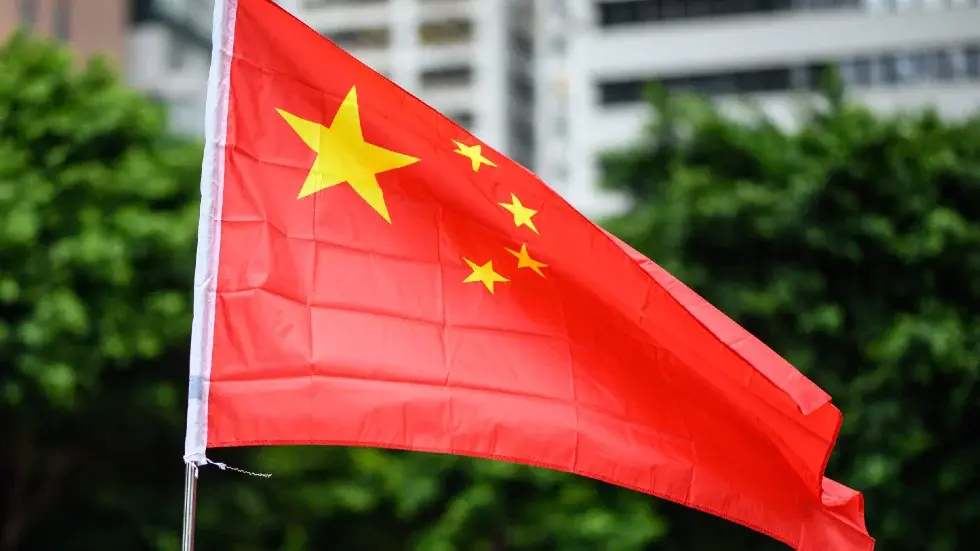

Western Europe, Australia and Canada are just Yankee sluts. if u get those to leave the dollar then u have successfully beheaded the capitalistic cyclops


Western Europe, Australia and Canada are just Yankee sluts. if u get those to leave the dollar then u have successfully beheaded the capitalistic cyclops


CopyQ is awesome.


probably ur battery already formed dendrites, causing it to have micro shorts internally and thus spreading heat in the phone case. a phone with 10w charging causes the battery to heat, let alone ur galaxy s20 charging at 15w. i actively cool my phone battery while charging by putting it in front of a fan so the battery stays cool and doesn’t form dendrites, and thus stays healthy. i also use a silicon case instead of leather else u ll be thermally suffocating ur phone: it uses metal as a case material for a reason. exynos for s20 seem to be made on the 7nm process node which usually should be efficient in term of temps. even when the cpu heats up (even using the 4g antenna, let alone a 5g one when active, the camera flash, all those heats up and causes the phone case to heat up too and then a chain cycle ensues by causing the battery to heat up sponatneously too, then it dries up faster than usual which compels the user to plug the charger and the infinite cycle of heat will never end…i never owned an exynos phone but sometimes a phone need to be underpowered so it could last.samsung phones are really overperforming but unluckely their users aren’t just thermal conscious. no engineering degree is needed to have a grasp over phone thermals but sometimes having some knowledge is needed if u cherich ur phone


busy week huh


idk what gaming implies but i think normal gaming is ok, on the other hand competetive gaming is absurd: 360fps@4k required, 10000dpi mouse (dafuq), optomechanical keyboard for nanosecond response lol (although i bought into one thou, didnt cost me a leg at least) …just game responsibly at 1080 at normal dps and all should be fine…also cutting on those energy drinks would be an extra. hardcore gaming is just straight consumerism. also i loathe twitch streaming…such a waste of bandwidth and resources
if a country has a housing crisis, the state should either afford social housing, or just control birthrate by some child policy. u cant allow people to impregnate each other like rabbits then wonder why everyone is on the street: but its in fact intended, it leverages companies power over the workforce by having everyone competing over a decent salary to afford rent


its been a while since i watched his videos but i always take all what he says with a grain of salt…i guess there s another side to his life maybe…


off topic but op what would u think of this video: https://youtu.be/KdC9xube-2c?si=Z6R1bhAC1YJnuz8L
i know the channel from awhile back, and dude really has some solid points, since he kinda conveys nuanced opinions rather than having a categoric stance. but i saw this video posted around somewhere in lemmy and thought to myself: people in grad won’t like this, and now i am sharing it with u to see what would u think about it, since the video tries to tell that not only america is chasing the homeless around…still i would really like to see how one from the opposite side would argue this :) i always believe in a civilized argument :)


they r full of crap, and hypocritical much so


tbh chinese doctorate holders contribute to science as much as their european counterparts or even more: so they benefit europe or the us where the research is conducted. but when they start to excel or outnumber their european counterparts then they are considered as a threat and they need to be ousted: when ousted europe pulls the surprised pikachu face when those researchers settle in their home country and try to commercialize their findings: those people benefit from state grants and subsidies. Russia, a country as a large as China with major state budget and yet their scientific contributions aren’t as numerous, because there aren’t as much hard working researchers as the chinese ones, and the state is underfunded since all the oil money goes to oligarch pockets and what not to spend on expensive cars and luxurious living. So chinese success is earned by merit since the chinese think long term instead of other wealthy but silly countries. What is wrong about plagiarism ? everyone can copy, but what matters is what u make of it next:Steve Jobs did copy, Bill G also did, why china should be an exception: US also making last dicth efforts to hinder chinese progress. At least chinese wealth funds beneficial research instead of promoting wars and subdizing weapon industries. I hope europe sees through this because the us economy is built on theft and hypocrisy. Brics is a first step, but when more countries join the club europe will have to choose in which side of the scale it wants to be, and thus it decides on how it would tip whether in its favour or not. Even after destroying nordstream, europe was already tied with india and russia by buying russian gas throu india, and it didnt buy american gas, since it didn’t make any economical sense. the world would be more peaceful with the absence of american imperialism


Intel unveiled its first direct mesh-to-mesh photonic fabric at the Hot Chips 2023 chip conference, highlighting its progress towards a future of optical chip-to-chip interconnects that are also championed by the likes of Nvidia and Ayar Labs. However, the eight-core 528-thread chip that Intel used for the demonstration stole the spotlight due to its unique architecture that sports 66 threads per core to enable up to 1TBs of data throughput. Surprisingly, the chip consumes only 75W of power, with 60 of the power being used by the optical interconnects, but the design could eventually enable systems with two million cores to be directly connected with under 400ns latency. Intels PUMA Programmable Unified Memory Architecture chip is part of the DARPA HIVE program that focuses on improving performance in petabyte-scale graph analytics work to unlock a 1000X improvement in performance-per-watt in hyper-sparse workloads. Surprisingly for an x86-centric company like Intel, the test chip utilizes a custom RISC architecture for streamlined performance in graph analytics workloads, delivering an 8X improvement in single-threaded performance. The chip is also created using TSMCs 7nm process, not Intels own internal nodes. After characterizing the target workloads, Intel concluded that it needed to craft an architecture that solved the challenges associated with extreme stress on the memory subsystem, deep pipelines, branch predictors, and out-of-order logic created by the workload. Intels custom core employs extreme parallelism to the tune of 66 hardware threads for each of the eight cores, large L1 instruction and data caches, and 4MB of scratchpad SRAM per core. The eight-core chip features 32 optical IO ports that operate at 32 GBsdir apiece, thus totaling 1TBs of total bandwidth. The chips drop into an eight-socket OCP server sled, offering up to 16 TBs of total optical throughput for the system, and each chip is fed by 32GB of custom DDR5-4000 DRAM. Intel fabbed the chip on TSMCs 7nm process with 27. 6 billion transistors spanning a 316mm2 die. The eight cores, which consume 1. 2 billion transistors, run down the center of the die, flanked by eight custom memory controllers with an 8-byte access granularity.


00:00:00 In this section, the video highlights the dire state of Britain’s economy and public services, attributing it to the austerity measures implemented by the government starting in 2010. These measures, introduced by David Cameron, were aimed at reducing government debt, but instead, they have resulted in a decline in education, healthcare, safety, and other essential services. The video explores the reasoning behind austerity, which was to save the British state from the bond markets and stimulate economic growth. However, with rising interest rates and a struggling economy, the policy has seemingly backfired. The debate between Keynesian economists and proponents of expansionary austerity is also discussed, with the latter arguing that reducing government spending could lead to a stronger economy. Ultimately, the video sets the stage to examine how austerity, meant to save Britain, has instead ruined it. 00:05:00 In this section, the excerpt discusses how austerity measures implemented by David Cameron’s government in Britain ultimately led to negative economic outcomes. Despite the theory that reduced government spending would stimulate economic growth, the reality was quite different. The private sector investment remained low, and the economy faltered while countries like the US, which avoided austerity, continued to grow. Government services suffered as a result, including the NHS and education sectors, which were promised protection but now face budget shortages and staff shortages. The failure of expansive austerity can be attributed to the fact that the anticipated investment and consumption boom did not occur, and the jobs created were of low quality, limiting real economic growth. 00:10:00 In this section, the speaker highlights that austerity measures in Britain resulted in a more unequal economy, favoring firms and capital owners over workers. The state’s attempt to make it more efficient led to a shift in employment from frontline personnel to policy consultants, negatively impacting the quality of life. The speaker argues that even sectors believed to be spared from budget cuts, such as the NHS and education, were affected due to population growth and inflation. The overall conclusion drawn is that austerity, in theory, could have saved Britain, but the evidence overwhelmingly shows that it instead ruined the country. The speaker emphasizes the need for nuance in evaluating austerity measures and points out that there are cases where properly implemented austerity could be beneficial, such as in countries like Kuwait. Nonetheless, the damaging effects of austerity on Britain are evident, regardless of one’s political inclination.


00:00:00 In this section, the creator discusses the issue of consumerism within the study community online. They clarify that while purchasing study trends and products can be fun and not inherently bad, the problem lies in the promotion of these products without any reasoning behind it. This creates a mindset that students can only be successful if they have the right items and products, which can be exclusionary and misleading. The creator reflects on how the study community has evolved over time, starting with a specific aesthetic on Tumblr and expanding to platforms like YouTube. They acknowledge that while the study community provides helpful advice and resources, it can also be toxic by promoting a culture of comparison and excess consumption. The creator also shares their personal experience of feeling pressured to conform to these trends and accumulate products, eventually realizing that it was not necessary for success. 00:05:00 In this section, the creator discusses the consumerist nature of the StudyTube community. They explain that while they own and showcase various products in their videos, it doesn’t mean they are promoting them as essential for studying. They highlight that creators have a responsibility to be transparent about the products they feature and clarify that not all products are perfect or necessary. The creator also expresses their belief that many StudyTube trends are overrated and may not be available in all countries. They emphasize that the visual aspects and material possessions within the community do not determine one’s success as a student, and that free resources can be just as valuable. They mention that the video is sponsored by Notion, a free organization app that they have been using exclusively for over a year and a half. 00:10:00 In this section, the YouTuber discusses using Notion as a study tool, noting that while some features are limited on the free plan, such as not being able to add new members, users can still share specific pages with classmates and export notes to PDF format. The YouTuber encourages viewers to start using Notion by clicking the provided link, as it supports their channel. They also emphasize that if Notion doesn’t work for them, there are many other alternatives to explore. Lastly, they advise against relying on any one tool as a solution to all study problems, and instead encourage viewers to keep trying and find what works best for them.
00:00:00 In this section, the speaker discusses the controversial changes that occurred after Audacity was acquired by Muse Group. These changes included the introduction of Telemetry, which raised concerns among the free and open-source software community. However, the speaker reassures viewers that the current privacy policy only includes minimal Telemetry such as update checking and error reporting, which can be easily disabled. Additionally, Audacity no longer sends data to Google and Yandex for analytics and has removed the clause about sharing data with law enforcement. Overall, the speaker concludes that there is no need to worry about Audacity being spyware and that the software is safe to use. 00:05:00 In this section, it is mentioned that the pushback from the community against the planned changes for Audacity has had an effect, with certain changes, such as telemetry, being scrapped. However, one concern that remains is the Contributor License Agreement (CLA), which requires anyone contributing code to Audacity to sign a legal document. While the Muse Group, the new owner of Audacity, has stated that it will keep Audacity free and open source, the CLA gives them the power to potentially repackage the code as a proprietary application in the future. Despite this, for end users, there may not be much cause for worry. The section also highlights some improvements made to Audacity since the acquisition, including the ability to drag elements with the mouse, non-destructive editing, support for VST3 plugins, and a few interface changes. Additionally, while there have been several forks of Audacity, most of them are no longer active, with Tenacity being one of the few that is still actively updated. 00:10:00 In this section, the speaker discusses the current state of Audacity and its forks, specifically Tenacity. Tenacity has had a turbulent development history, with the original maintainer stepping down due to receiving death threats. The previous maintainer of Sawstacity is now in charge of Tenacity, which is considered to be the most prominent fork. However, Tenacity is still in beta and may contain bugs and possible data loss, so the speaker does not recommend using it full-time. Additionally, Tenacity is lacking some of the new features that have been added to Audacity. In conclusion, the speaker suggests sticking with Audacity as it is currently in good hands and is a reliable choice for audio editing


Jin Xing, a former chief engineer for NXP Semiconductors NV, moved back to China and founded Autorock, which competes with his former employer. A new study by Strider Technologies Inc. found that large European technology companies lost over 30,000 experts to Chinese organizations, mostly in semiconductors and telecom equipment makers, over the past two decades. The Chinese Foreign Ministry rejected Strider’s conclusions, stating that China incentivizes intellectual property theft with cash grants, tax breaks, and other perks. The report highlights the scale of Chinese recruitment of Western tech workers and highlights the growing threat from China in recruitment of technological talent. The European companies that have lost the most employees to Chinese firms include Nokia Oyj, Ericsson AB, Siemens AG, Robert Bosch GmbH, and NXP. The workers’ motivations for leaving ranged from lack of job opportunities, well-compensated compensation, and a sense of patriotism. China sees leadership in the semiconductor sector as vital to its military and commercial goals, and legal and trade barriers in the US will only push them to ramp up operations elsewhere. Huawei Technologies Co., ZTE Corp., Lenovo Group Ltd. and Wingtech Technology Co. are among the beneficiaries. Strider says it has no evidence that Jin stole IP, and attempts to reach him were unsuccessful.
off topic but feed ur dishwasher softened water to avoid limestone formation. water softening device is a good investement in this regard, to feed multiple appliances: washing machine, water heater, etc …


good for them. hope those industries pay their dues to the goverment


If it uses internal storage as swap, thats ofc way quicker. but u know what quicker ? real lpddr ram. if its 24 gig lpddr ram then i am all in :)
probably cause they didn’t invest much in cybersec…like most companies…and they deserve it, for not hiring such essential engineers